Features of interior design
Glass tiles are made of quartz sand and binders. The tempered glass obtained as a result of production is absolutely safe, since even if damaged, it does not give sharp edges. Designers around the world have long appreciated its advantages: an interior decorated with glass fragments looks aesthetically pleasing, expensive and original:
- Glossy products reflect light, therefore making the interior visually wider and brighter.
- Glass combines well with porcelain stoneware, wallpaper, plastic, metal and wood.
- The products look voluminous, visually adding depth to the room.
It is laid using transparent silicone sealant and grout.
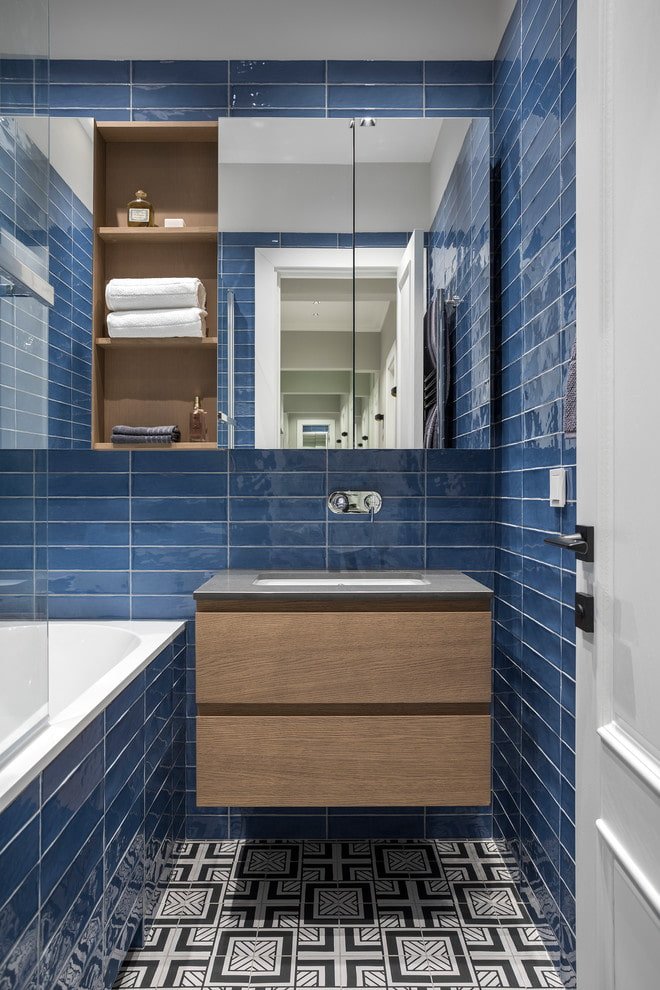

Pros and cons of glass finishing
Glass tiles are used for facing various surfaces. What are their advantages?
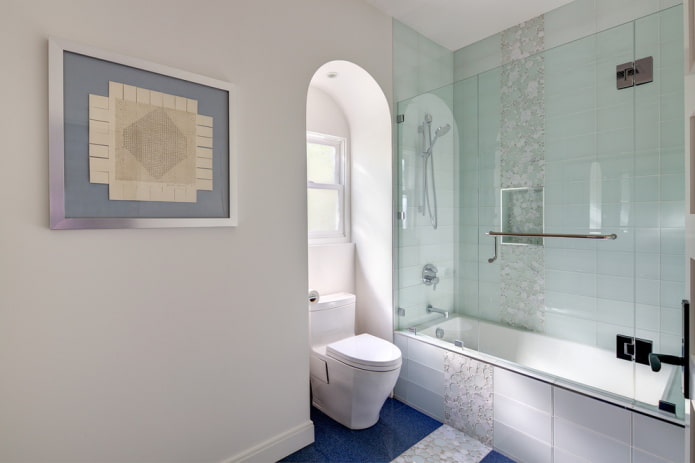
The photo shows a bathroom that combines two types of tiles: polished glass and textured “bubbles”.
Types
The modern construction market offers several types of glass tiles:
- Enameled. The glass is coated with titanium enamel and baked. The enamel provides increased strength and gives the surface rich colors.
- Marblit. It is made of matte or frosted glass. It is distinguished by its large thickness (up to 12 mm) and size (up to 50×50 cm). The smooth or ribbed front side has a single-color or marble coloring, and the back side is relief, providing better adhesion during installation.
- Steklodekor. It is suitable for creating mosaic patterns or decorative panels, as it has a small size (about 65 * 65 mm). There is also glass with cuts, which imitates a mosaic: it is laid as a whole sheet, and not individually.
- Stemalite. Large sheet glass is used for its production. These are rectangular panels from 40 to 150 cm long. Its production is similar to the process of creating enamel tiles. Heat treatment gives the products special wear resistance, reliably holding the enamel.
- Penodecor. This square tile has a glass-like colored film on the front side. Its thickness reaches 4 cm, which allows it to be used for the construction of partitions.

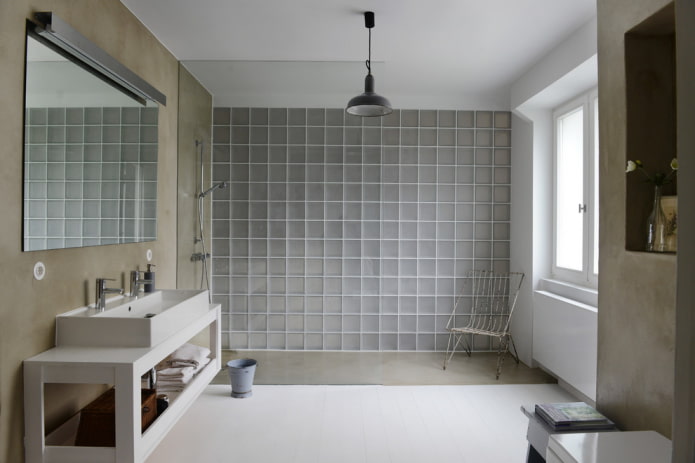

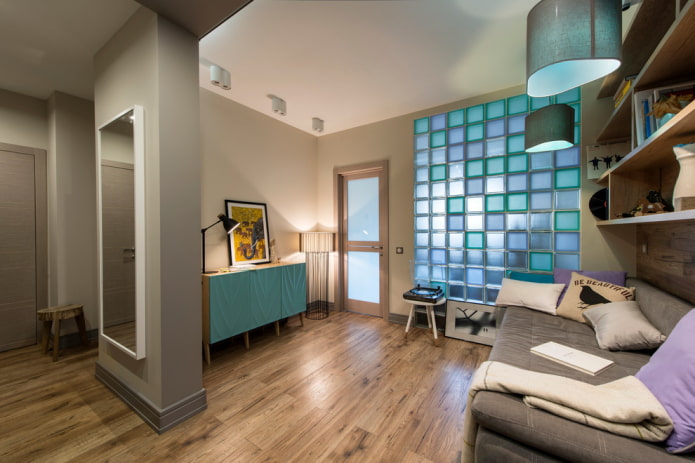
What can be decorated with tiles?
Glass decor transforms and improves the interior, sets its style and adds shine to the atmosphere.
The following surfaces are decorated with tiles:
- walls;
- apron;.
- shower cabin;
- floor;
- ceiling;
- arches;
- fireplace.
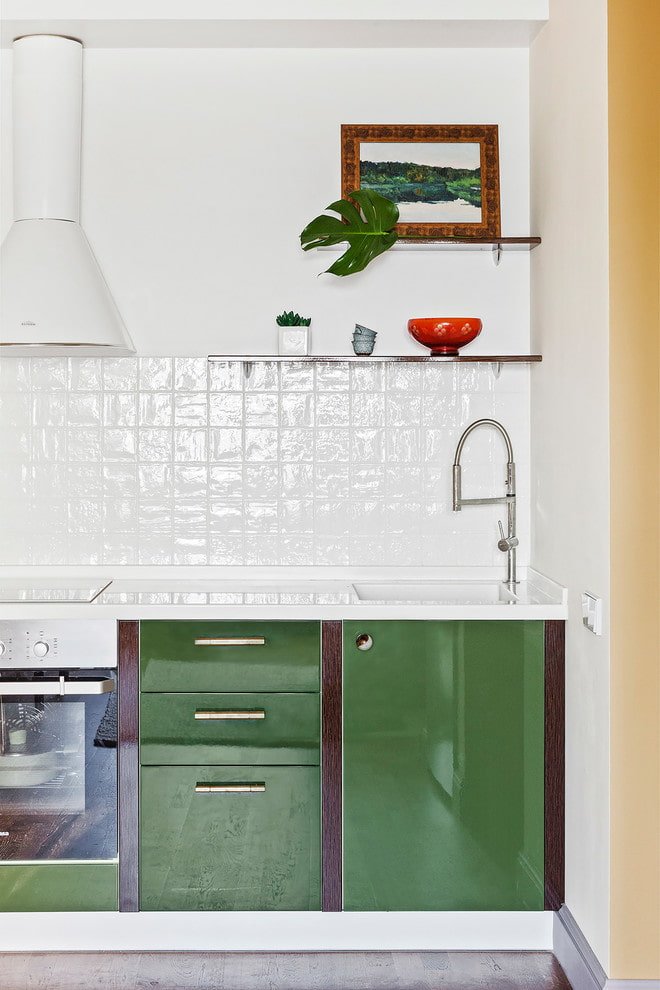

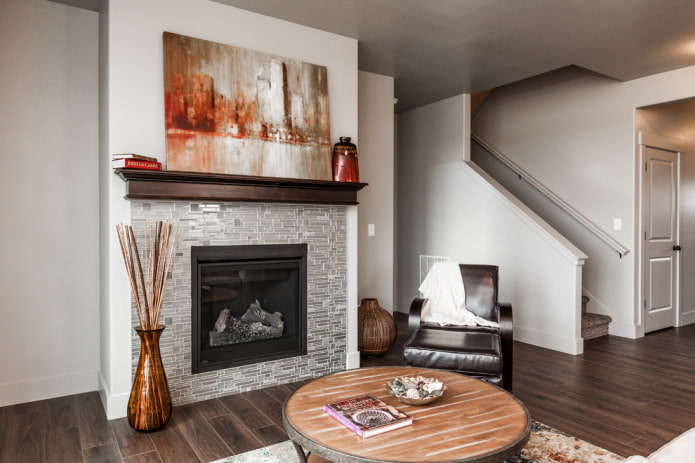
The photo shows a fireplace portal finished with fireproof glass tiles.
Even small details with glass inclusions can radically change the design of the room.

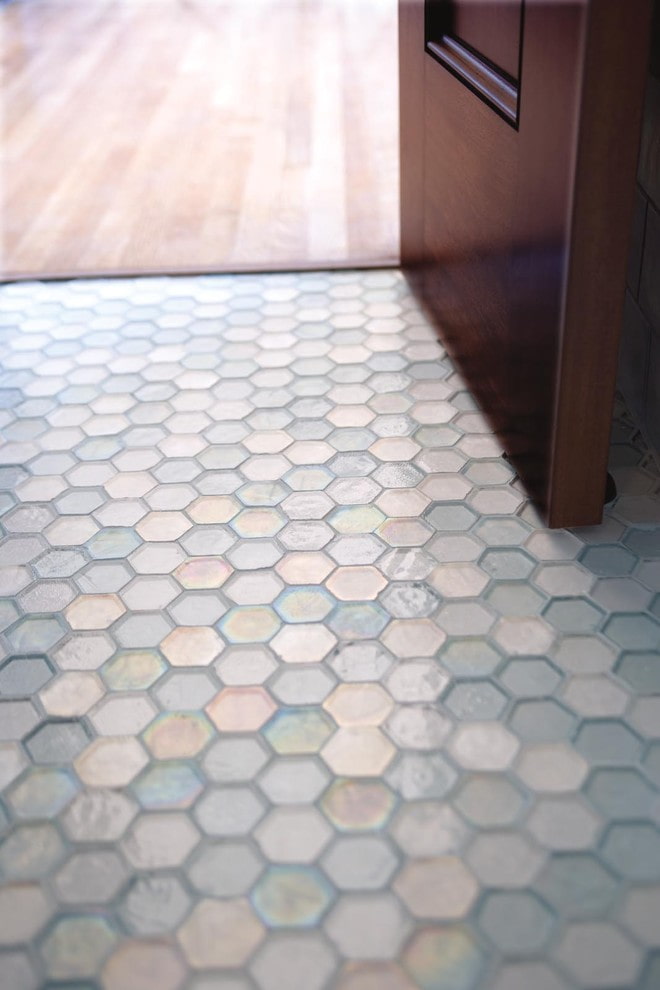
Tile shapes and sizes
Today, construction stores offer a wide range of tile products of various shapes:
- Square 10×10, 15×15 or 30×30 cm. Looks harmonious and does not stand out from the overall interior.
- Small mosaic 1×1, 2×2, 2×4, 3×3 see. Allows you to decorate the interior with a pattern or geometric inserts.
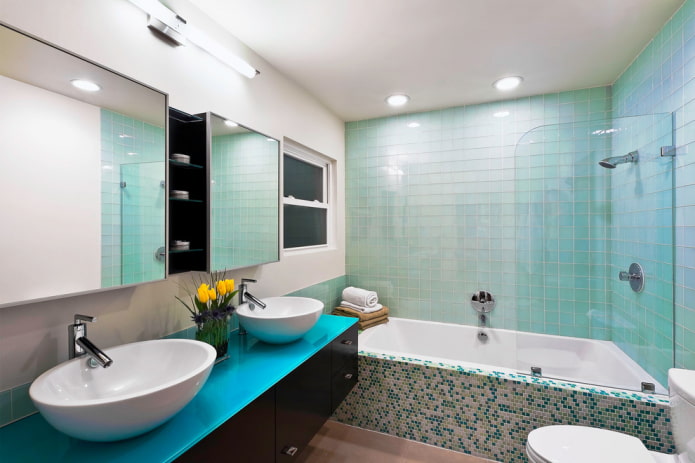
- Rectangular products of standard size 7.5×15 cm, or “hog”, which is always relevant and looks stylish in any interior. Often there are glass strips with a width of 1 to 5 cm and a length of 40 to 60 cm.
- Fish scales. Colourful semi-circular fragments that attract attention with their unusual shape.

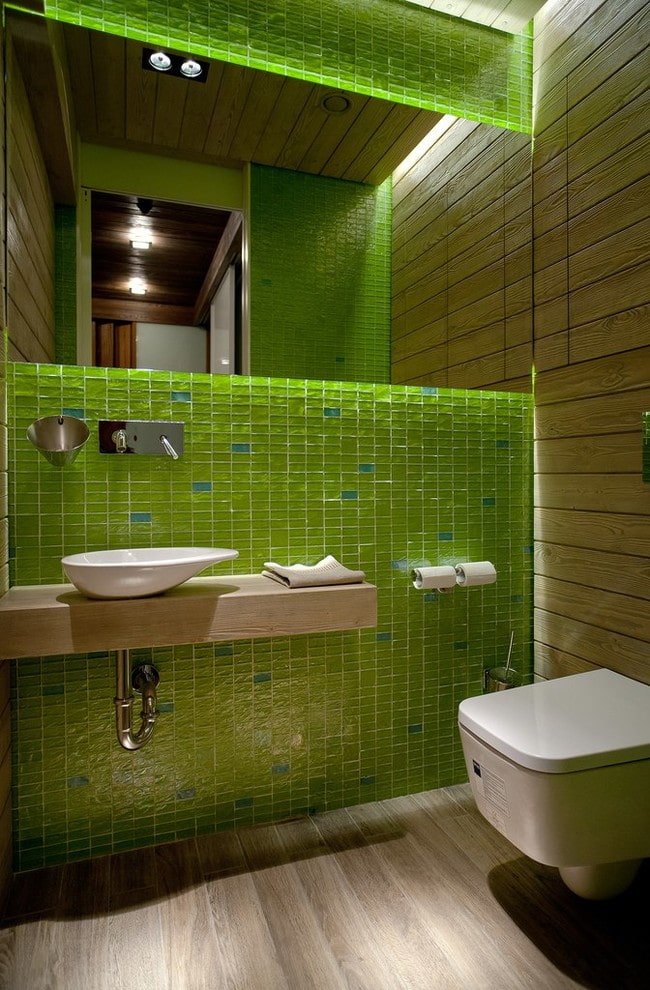

- Honeycombs, bubbles, figured tiles are picturesque products that not only have unique decorative properties, but also masterfully conceal the unevenness of the wall.
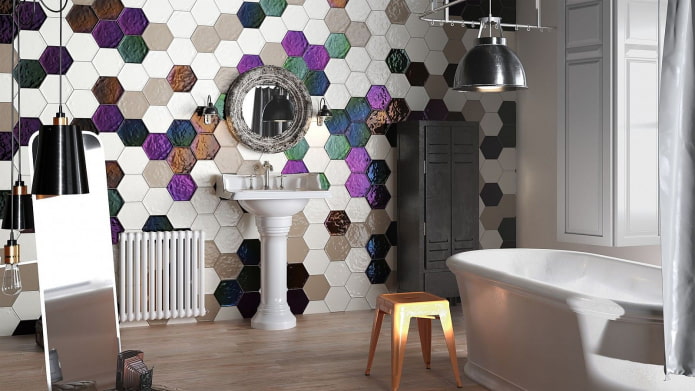
The photo shows a bathroom with an accent wall decorated with multi-colored hexagons.
Design options
Decorative glass tiles imitate textures that cannot be recreated with ceramic products: ice, transparent precious stones, mirror surfaces.
Mother-of-pearl glass tiles look great as a kitchen apron.

To transform the interior, it is not necessary to make cladding of the entire area: it is enough to decorate the surface with glass inserts or create a panel.

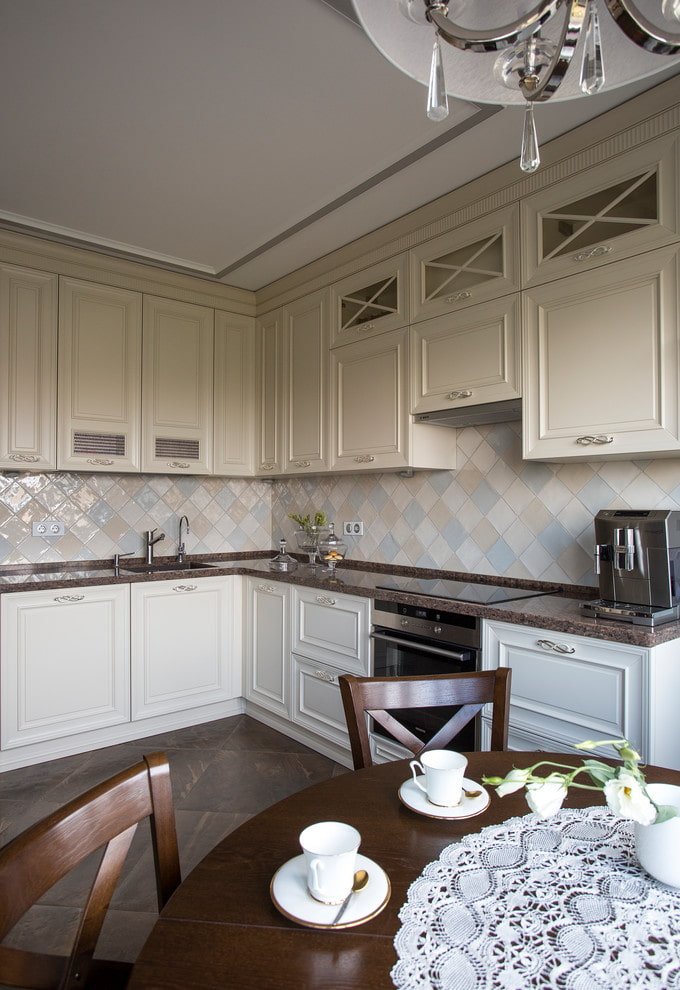
Products made of Murano glass: it is not monochromatic, as we are used to seeing, but with multi-colored overflows, which make up a unique ornament.
A special category includes products obtained by the fusing method: multi-colored glass blanks are melted and then joined. After cooling, a solid glass sheet with a unique abstract pattern or design is formed.

Transparent tiles are universal: they harmonize with any wall covering. Products with a bevel (edge along the edges) give a special effect to the room: the surface decorated with them looks voluminous and elegant.
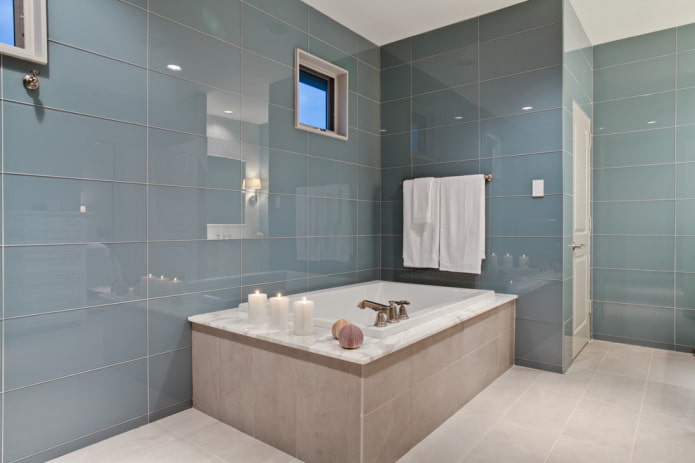
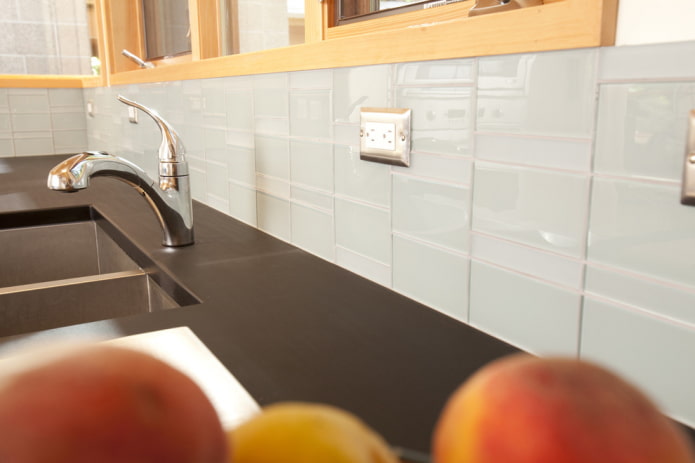
Colors of glass tiles
Glass products have a diverse color palette, which allows you to choose a decor for any setting. The paint or pattern is applied to the back side, so the color does not fade during use.
A surface decorated in white tones is a universal solution for small bathrooms. In a spacious room, you can use black products that will add luxury and severity to the interior.

The photo shows a dark gray wall with a geometric pattern made up of tiles of two sizes.
Gray glass tiles are suitable for an interior decorated in calm tones. On the contrary, expensive shining elements suggest themselves for decoration with elements of luxury, for example, mosaics imitating silver metal or gold.
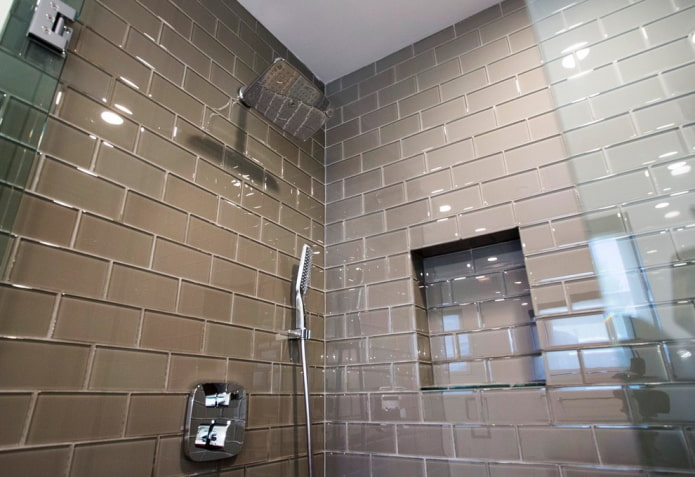

Colored products are often used in combination with materials of neutral shades. For example, a green tiled apron harmonizes with white and wooden furniture, creating a corner with natural motifs in the apartment. Pastel tiles (blue, light green, pink) set a calm mood and help to relax.


Photos of glass tiles for bathrooms and toilets
Glass tiles are often found in bathroom decor. It is not afraid of moisture and is easy to clean from drops and stains.
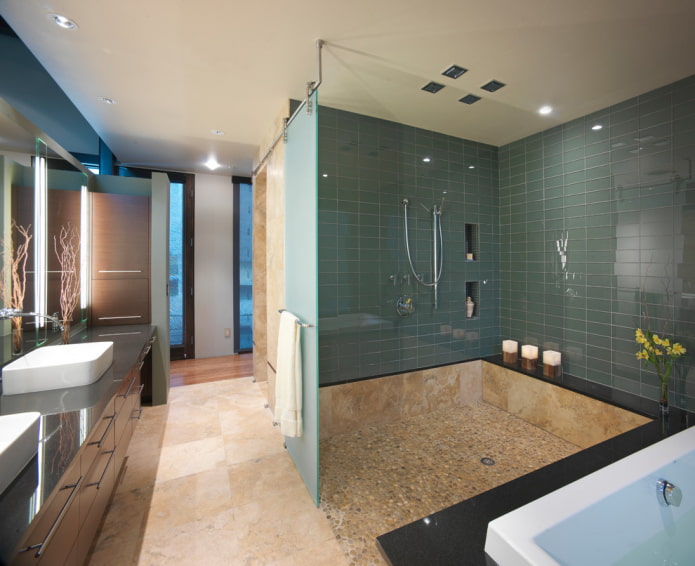
The photo shows a shower area finished with a dark glass “hog”.
Glass products go well with tiles, paint, metal and chrome parts. Small tiles are most often used for tiling individual sections of the bathroom: the shower stall, the area with a mirror and a sink.
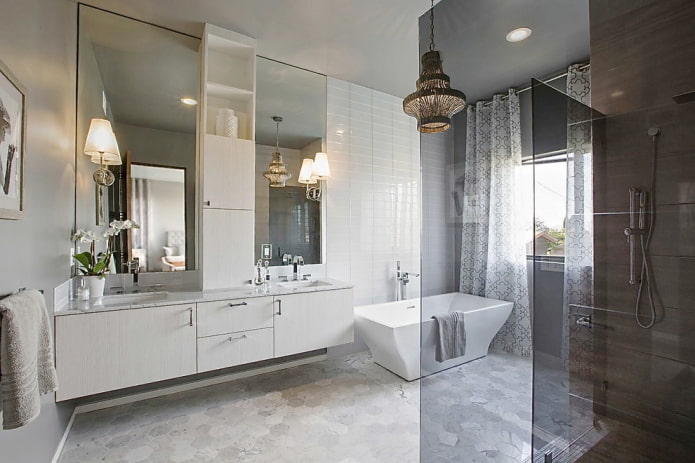

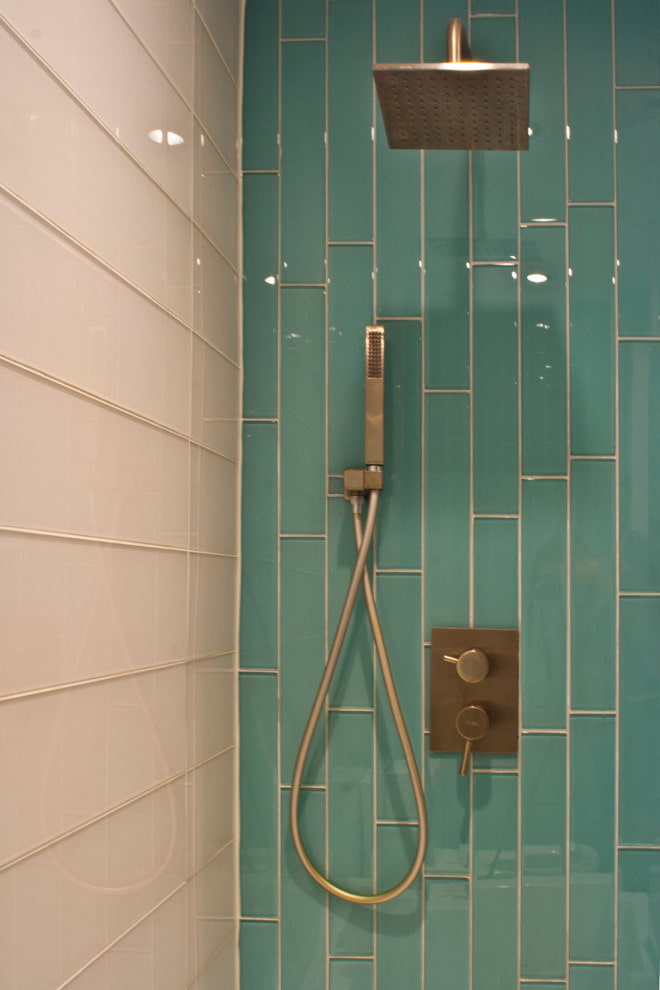
Glass fragments can be used to highlight one accent wall.
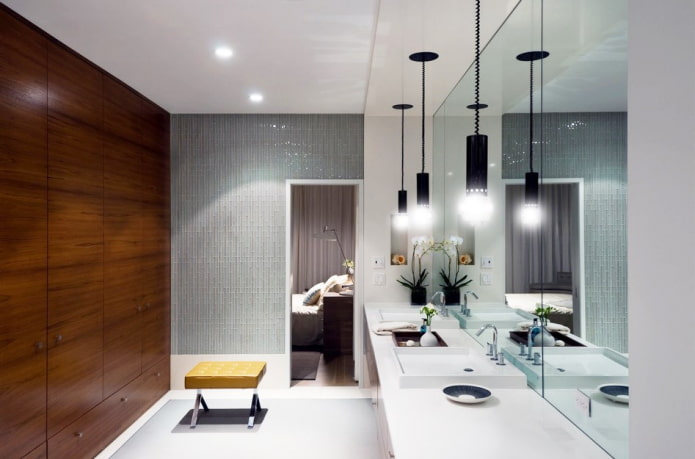
The photo shows a bathroom with transparent tiles around the doorway. It harmonizes with mirrors and helps to unload the space, in which an entire wall is reserved for bulky dark cabinets.
The use of glass fragments in the interior of a bathroom or toilet sets a certain mood for the entire environment.

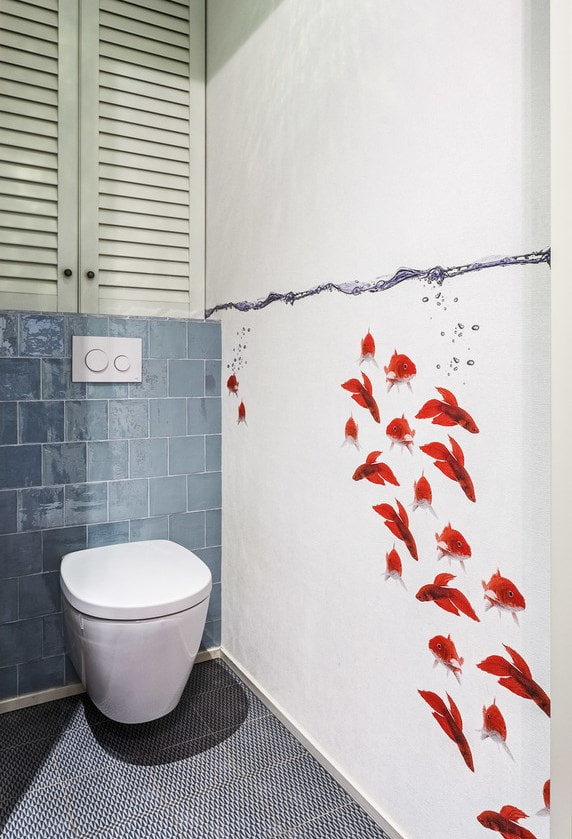
Even a small area decorated with tiles can give the room elegance and sophistication.

The photo shows patterned tiles that soften the roughness of a wooden cabinet. The contrast of glass and wood gives an impressive result.
Glass Tile Ideas for the Kitchen
Glass tiles in the kitchen are traditionally used as a backsplash. It not only adds a “zest” to the interior, but also protects the wall in the cooking area from dirt.
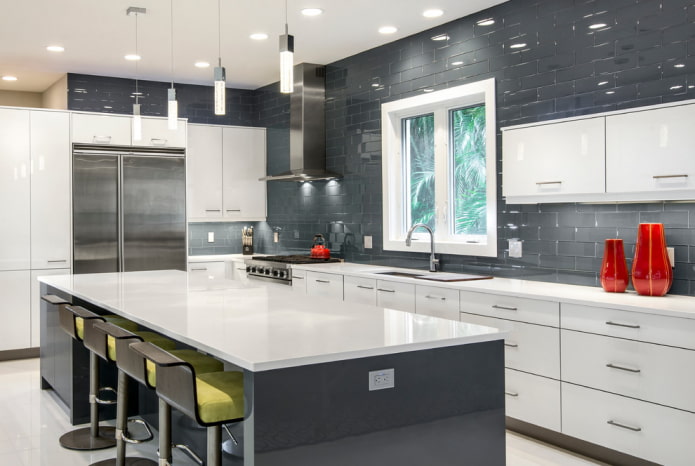
The photo shows a gray glass apron that matches the glossy island table.
The presence of muted or bright colors provides the kitchen with a beautiful appearance.
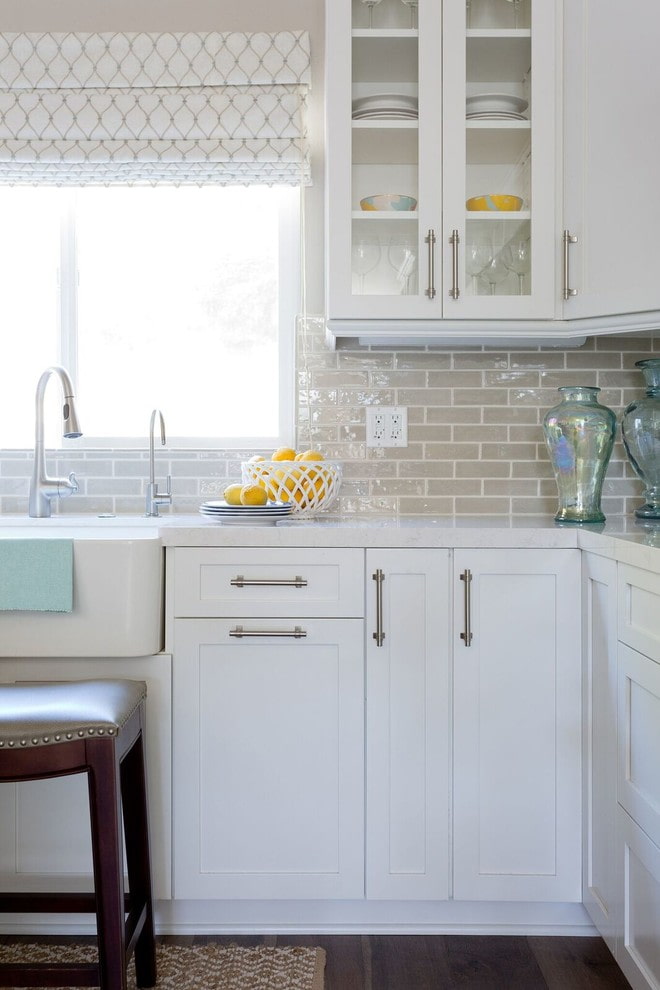
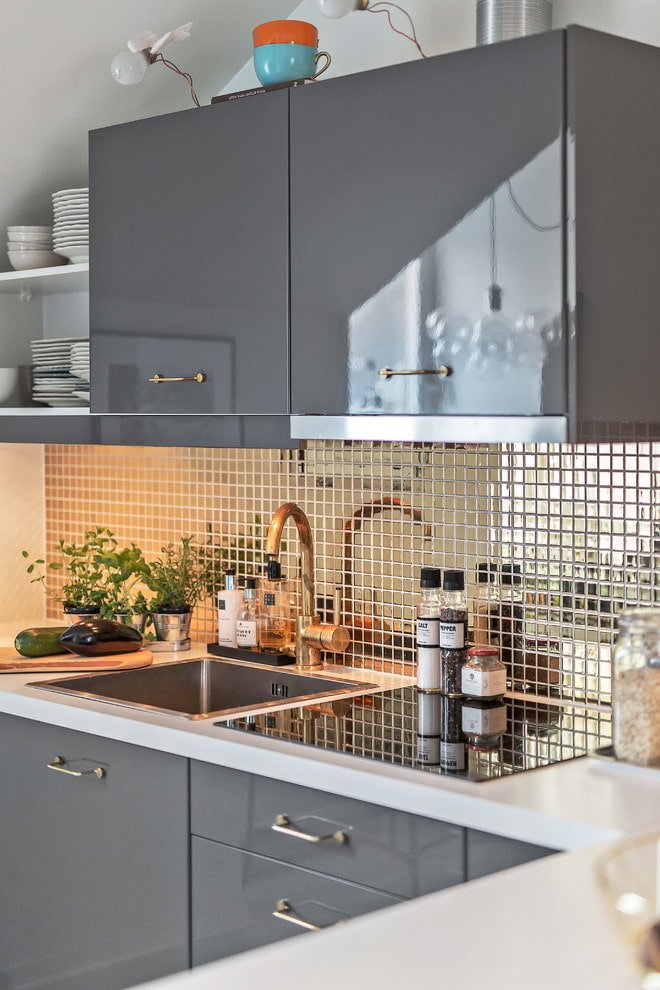
A red glass “hog” apron combined with a white set looks stylish and presentable.
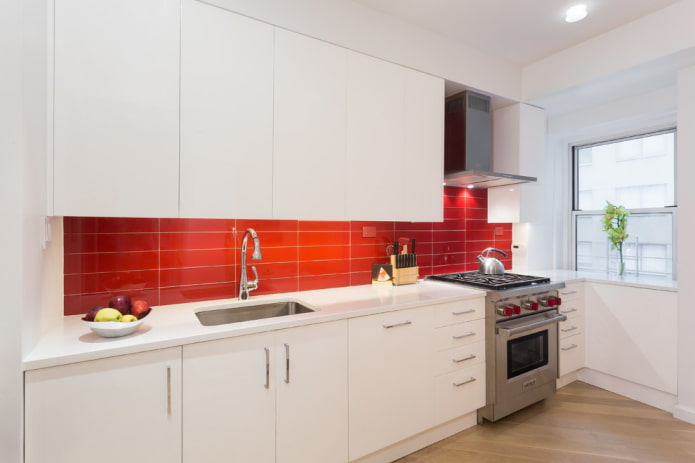
The photo shows a classic combination of scarlet and white. The glass apron serves as a bright accent in a monochromatic setting.
The area around the stove is also lined with glass products, since glass is resistant to high temperatures.
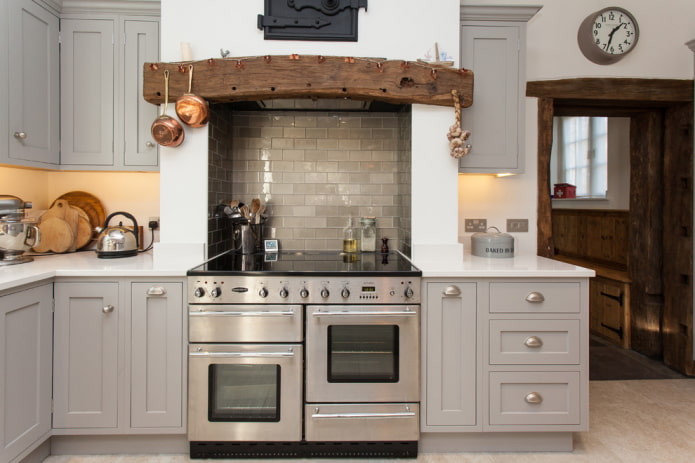
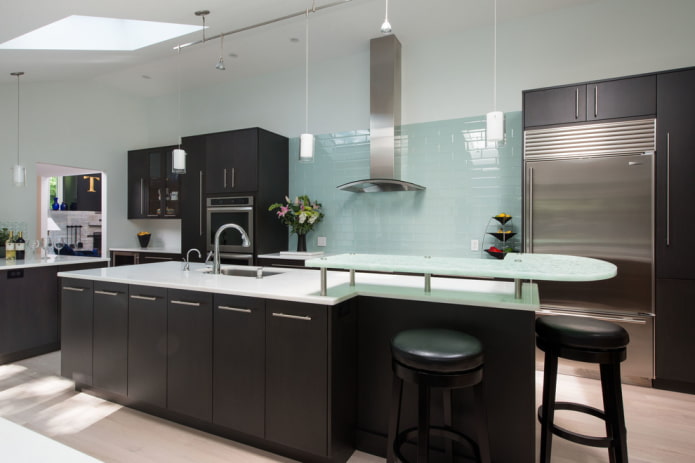
Glass decor does not overload the interior, but adds lightness and airiness to it.

In the photo, a glass apron in pastel colors dilutes the dark, laconic furniture set.
Now reading:
- How to Make Garden Furniture from Pallets Yourself? – 7 Detailed Lessons for Your Yard.
- 12 original flower beds that will transform your dacha.
- How to Create a Cozy and Beautiful Open Balcony Without Clutter (36 Photos)
- Your Comprehensive Guide to Buying a Used Opel Ampera-e
- Nissan Navara Pre-Owned Vehicle Buying Guide